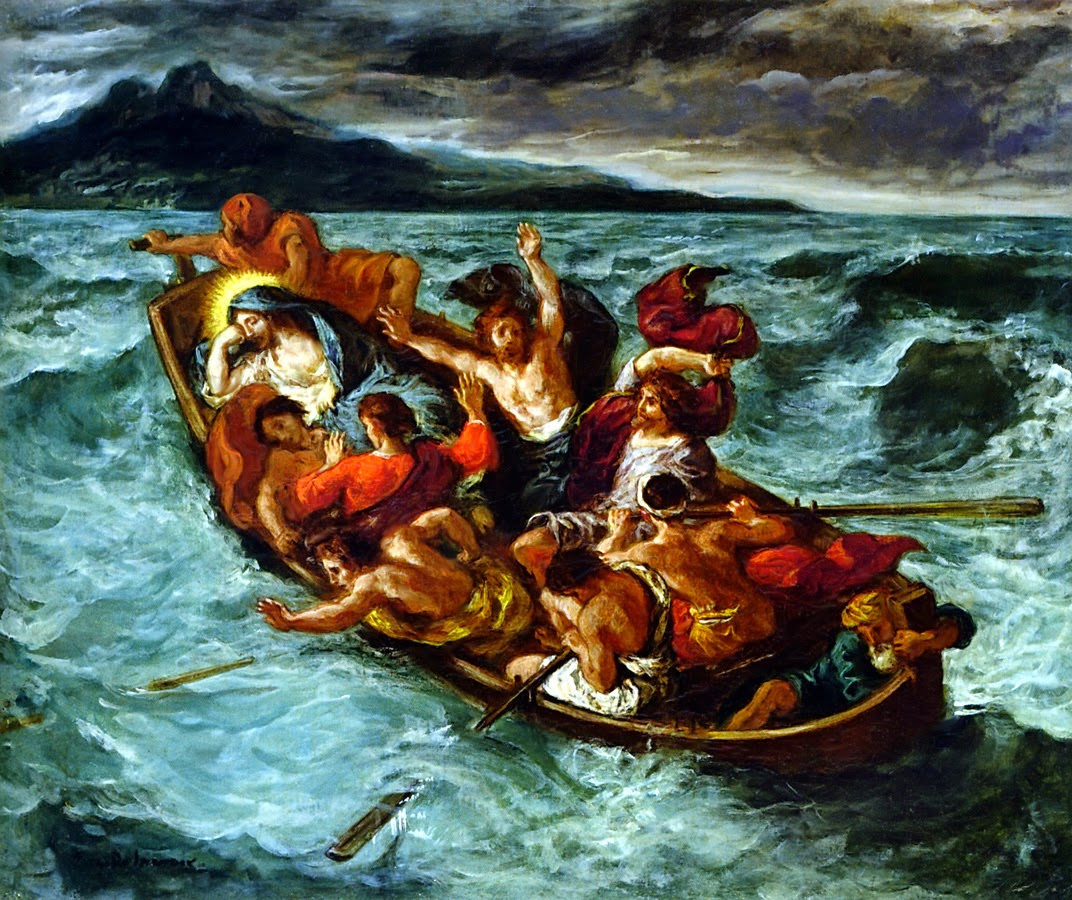Excerpted from The
Miracles of Jesus, 106–108
.JPG) |
| The Church at Nain, with BYU Jerusalem Center students, summer 2012 |
Only
Luke tells the story of the widow of Nain, whose son Jesus revived even as his
body was being taken to its burial (Luke 7:11–17). Placed after the healing of the centurion’s
son and before the calming of the storm, this story may have been the first instance
of Jesus’ raising someone from the dead (see “List of the Miracles of Jesus” in
the Appendix). According to the Lucan
account, Jesus approached the city of Nain in Galilee, accompanied by a large
following of disciples and others. The
site of ancient Nain, is now occupied by the Arab village of Na`in some four
miles southeast of Nazareth. The town
has a beautiful view of the Jezreel Valley, which might have given it its name,
meaning “lovely” or “charming.” At the gate of this town Jesus met the
funeral procession of the young man, described as “the only son (Greek, monogenēs huios) of his mother, and she was a widow” (Luke 7:12, emphasis
added). Moved with compassion, Jesus
told the bereft mother not to weep, reached out and touched the funeral bier,
and called upon the young man, saying, “Young man, I say unto thee, Arise (Greek, egerthēti)” (Luke 7:14, emphasis added). Immediately the young man sat up alive and
began to speak.

Of
the three recorded instances of Jesus raising the dead, this story has the most
in common with the Old Testament stories of Elijah and Elisha. Elijah had raised the son of the woman of
Zarephath, who, as in this story, was also a widow. Elisha revived the only son of the Shunamite
woman, whose home, Shunem, was probably at the site of the modern Arab village
of Sulam less than two miles southwest of Nain. Yet while Jesus’ miracle at Nain might have
been anticipated by these earlier Old Testament stories, there were significant
differences. Jesus does not seem to have
known the widow at Nain before, and he helped her without any request or
expression of faith on her part. Elijah
and Elisha, on the other hand, had been guests of the women whom they helped,
and both mothers had begged the prophets to help their sons. Their sons were resuscitated privately in
their own houses, whereas Jesus performed the miracle at Nain in public before
much of the town. Finally, the Shunamite
woman, whose son’s earlier conception had been a miracle itself, was not only
married but also quite wealthy.
The
emphasis on the widowhood of the woman at Nain, however, underscores her
desperate plight: not only had she now lost her son, she had earlier lost a
husband. The term used for the young man
when Jesus calls upon him to arise is neaniske. Though this means “youth,” it can refer to
any man until about the age of forty, making it possible that he
had been a young adult and his widowed mother’s only source of support. His death was thus not only a devastating
personal loss for her, it may also have represented an economic catastrophe. In Luke’s account, she neither speaks nor
acts at any point in the story; she is, according to Barbara Reid, “a nameless,
silent object of pity.” As a result, the miracle is portrayed as a
pure act of kindheartedness on the part of Jesus, illustrating his interest in and
concern for women, the poor, and the marginalized.
 |
| James Tissot, Jesus Raising the Son of the Widow at Nain |
Jesus
stopped the procession of the funeral cortege by touching the bier, an act that
would have incurred ritual defilement according to strict interpretation of the
law. As usual for Jesus, such considerations
were not important in view of his healing ministry and his desire to help those
who were suffering. Just as Jesus
frequently healed people by “raising” them from their sick beds, here Jesus
commanded the young man to “arise,” using a form of the same verb egeirō that is also used in connection
with resurrection. Thus while this man’s
resuscitation was only a return to mortal life, it nevertheless serves as
anticipation with Jesus’ own permanent conquest of death. This connection might be underscored by
Luke’s emphasizing that the young man was the widow’s only son (monogenēs huios), even as Christ is the
Only Begotten (monogenēs) of the
Father (John 1:18). While Mary had other children by Joseph (see
Mark 6:3; Matthew 13:55), Joseph is never mentioned again as being alive after
the stories of Jesus’ birth and boyhood.
As a result, there is also a certain parallelism between the widow of
Nain and Mary, a widow who also witnessed the death of her own beloved son.
After the
young man arose, Jesus “delivered him to his mother” (Luke 7:15), even as
Elijah had “delivered” the child of the widow of Zarephath back to her, saying
“See, thy son liveth” (1 Kings 17:23). At Nain the crowd reacted with both fear and
awe, giving glory to God and exclaiming “that a great prophet is risen up among
us” and “God hath visited his people” (Luke 7:16). Given Nain’s proximity to Old Testament
Shunem, the multitude may well have had Elisha in mind. Yet the public wonder and expressions of
praise must have paled when compared to the heartfelt relief and overwhelming
joy of the mother, which was not recorded.
The miracle of Jesus’ raising the widow’s son was only the first of
others he would perform, each of which looked forward to a much greater,
everlasting restoration of life. This
ultimate miracle will not only return one woman’s child to her but will restore
all of our loved ones to us, with a promise of our never being separated again
if we are true and faithful.

.JPG)



